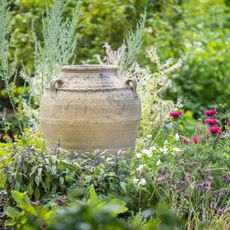Deer Mushrooms In The Lawn: What To Do With Deer Mushrooms


For many homeowners, mushrooms can be a nuisance growing in lawns, flower beds, and manicured landscape plantings. While troublesome, most mushroom populations can be easily removed or managed. One type of mushroom, called the ‘deer mushroom,’ is frequently found in rural yard spaces.
What are Deer Mushrooms?
Deer mushrooms are a type of mushroom commonly found in North America. This specific type of mushroom is typically found on dead or decaying hardwood. This can include decaying logs, downed trees, and even some types of mulches. However, deer mushrooms in the lawn or on conifer trees have also been noted.
These prolific mushrooms are likely to be found growing at any time throughout the year, as long as temperatures are not too cold.
Identifying Deer Mushrooms
Deer mushrooms usually reach heights of about 2 to 4 inches (5-10 cm.). In examining the cap of the mushroom, colors are most likely to range in shades of light to dark brown. As the fungi continue to age, the gills of the plant gradually change to a light pink color.
The pink gill coloration is just one of the key aspects of identifying deer mushrooms. This mushroom is most likely in or near woodland settings where growing conditions are optimal. When identifying deer mushroom, it is best to solicit help from a professional field guide. As with any other type of mushroom, many toxic varieties may look quite similar.
Are deer mushrooms edible? Although deer mushrooms, Pluteus cervinus, are considered edible, they must be used when they are very young. Even in these cases, many find the taste to be less than enjoyable. It is important to remember that wild mushrooms should never be consumed without absolute certainty of edibility. Consuming wild mushrooms can be dangerous, and in some cases, deadly. If in doubt, always err on the side of caution and avoid eating them.
If you’re not sure what to do with deer mushrooms popping up in the lawn or other landscape areas, it’s best to just let them be. As with most any type of mushroom fungi, they are beneficial in helping to break down organic matter.
Gardening tips, videos, info and more delivered right to your inbox!
Sign up for the Gardening Know How newsletter today and receive a free download of our most popular eBook "How to Grow Delicious Tomatoes."

Tonya Barnett has been gardening for 13 years. Flowers are her passion. She has trasformed her backyard into a cut flower garden, which she regularly chronicles on her YouTube channel http://www.youtube.com/@tonyawiththeflowers.
-
 Front Yard Herb Garden Ideas To Spice Up Your Landscape
Front Yard Herb Garden Ideas To Spice Up Your LandscapeUse your imagination and plant a lovely front yard herb garden. You’ll love the convenience, the fragrance and the beauty, and pollinators will appreciate it.
By Amy Grant
-
 When To Clean Up Garden Beds In Spring To Protect Pollinators
When To Clean Up Garden Beds In Spring To Protect PollinatorsEvery spring, I'm reminded that many species of insects have used my garden as a winter hotel and may not be ready for a wake-up call just yet.
By Teo Spengler